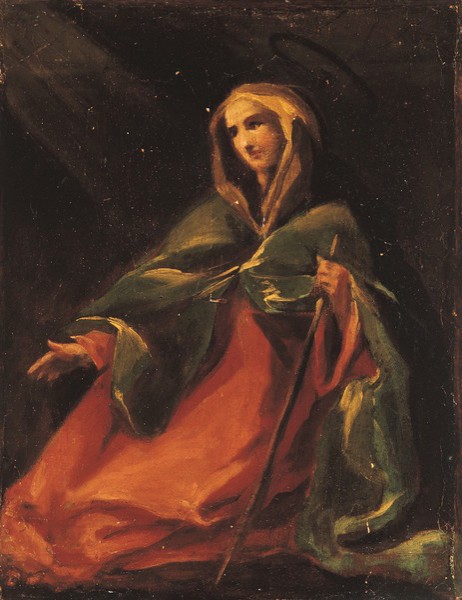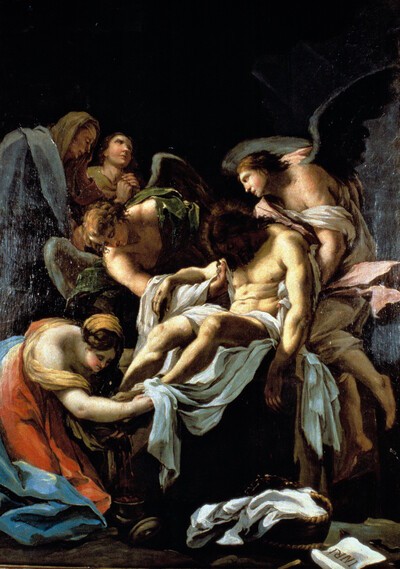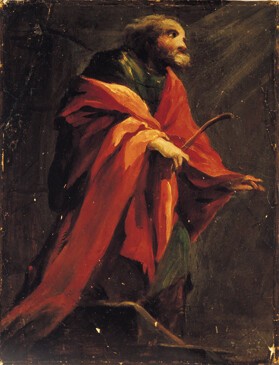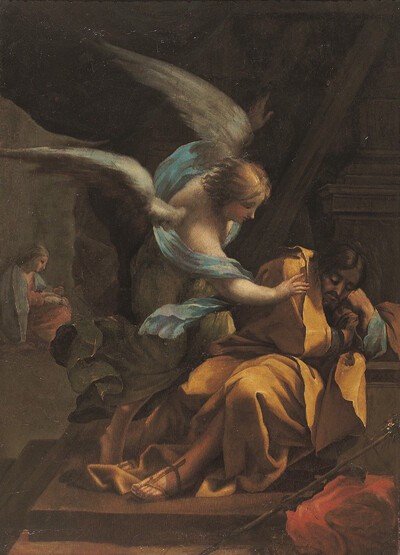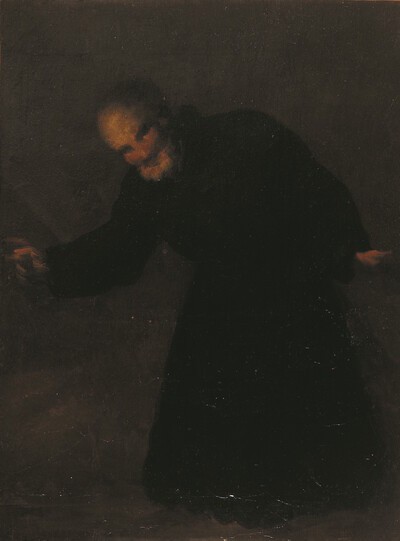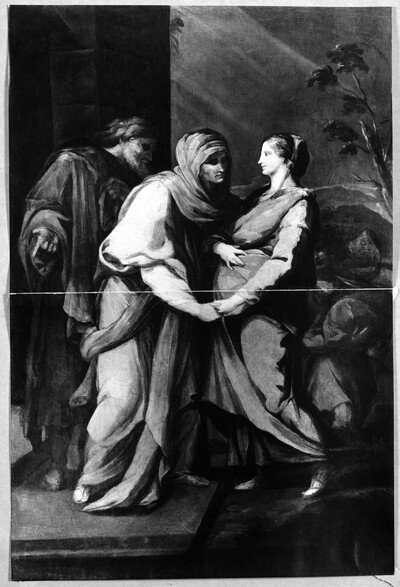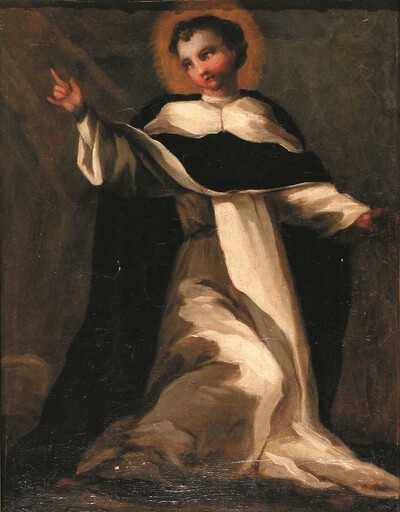- Cronología
- Ca. 1771 - 1773
- Ubicación
- Museo Goya. Colección Ibercaja, Zaragoza, Spain
- Dimensiones
- 37 x 30 cm
- Técnica y soporte
- Oil mural painting transferred to canvas
- Reconocimiento de la autoría de Goya
- Attributed work
- Titular
- Ibercaja Collection
- Ficha: realización/revisión
- 07 Oct 2010 / 13 Jun 2023
- Inventario
- (2309)
This painting was acquired by the Cuban Carlos Francisco Javier del Valle Grao, who removed his paintings from the museum in 1932 and took them with him to La Habana in Cuba. The Cuban government seized the work along with two others from the series, Saint Joachim (San Joaquín) and Saint Vincent Ferrer (San Vicente Ferrer) in 1965. According to its owner, it then travelled to Russia, and was subsequently acquired by unknown means by a private collection in Miami. It was finally bought by Ibercaja in 1999 in an auction at the Dorotheum auction house in Vienna.
For further information see The Dream of Saint Joseph.
According to a written description by Ricardo del Arco (1915), this painting was located on the front wall of the oratory along with Saint Joachim, the two compositions flanking the sides of a niche which held a sculpture.
Its inclusion in the iconography of the oratory is explained by the fact it is the traditional iconographic pairing of Saint Joachim.
Saint Anne is shown in three-quarter pose facing towards the viewer's left in a kneeling position against a dark, neutral background lightened only by the rays of light which emanate from the upper left-hand corner of the painting. Her face, brightly illuminated by the light, is framed by a scarf in yellow ochre. She also wears a red tunic and dark green cloak, the reverse of the colour scheme used in the depiction of Saint Joachim. She is leaning on a staff which she holds in her left hand. Above her head is a black divine halo.
As in the case of the other three small format paintings, this work is characterized by energetic, sketchy brushstrokes which are somewhat careless but extremely expressive and lend the figures an impressive sense of volume through the use of light and colour.
For further information see The Dream of Saint Joseph.
-
Exposición de obras de Goya y de objetos que recuerdan las manufacturas artísticas de su épocaMuseo de ZaragozaZaragoza1928organized by la Real Academia de Nobles y Bellas Artes de San Luis in collaboration with the Junta del Patronato del Museo Provincial. April 1928cat. 7
-
Goya y el Palacio de SobradielMuseo de ZaragozaZaragoza2006organized by Gobierno de Aragón at the Museo de Zaragoza, consultant editor Juan Carlos Lozano López. From December 15th 2006 to February 4th 2007cat. 30
-
Pinturas de Goya (inéditas) en el palacio de los condes de Sobradiel de ZaragozaBoletín de la Sociedad Española de Excursiones1915pp. 124-131
-
Goya. Pintor religioso: Precedentes italianos y francesesRevista de Ideas EstéticasMadrid1946pp. 277-306
-
Cuadros de Goya en el Museo Lázaro,Seminario de Arte AragonésZaragoza1952p. 3
-
“Anotaciones al Goya joven”Paragone1954pp. 5-28
-
Les peintures de Goya dans la chapelle du palais des Comtes de Sobradiel à SaragosseRevue des ArtsParís1954pp. 215-222
-
Vie et ouvre de Francisco de GoyaParísOffice du livre1970p. 81, cat. 14
-
BarcelonaPolígrafa1970vol. I, p. 238, cat. 21
-
Goya en AragónEditorial Everest1970p. 20
-
Goya en ZaragozaZaragozaAyuntamiento de Zaragoza1971pp. 37-46
-
Datos inéditos y precisiones iconográficas y estilísticas sobre las pinturas que decoraban el oratorio del palacio de los condes de Sobradiel en Zaragoza, originales de Francisco de GoyaArchivo Español de Arte1990pp. 70 y ss
-
Goya. Pintor religiosoDiputación General de Aragón1990pp. 59-67
-
Goya y Aragón. Familia, amistades y encargos artísticoscol. Col. Mariano de Pano y RuataZaragozaCaja de Ahorros de la Inmaculada de Aragón1995pp. 94-98
-
Goya y el Palacio de SobradielZaragozaGobierno de Aragón, Dpto. de Educación, Cultura y Deporte2008pp. 272-273
-
Goya y Zaragoza (1746-1775). Sus raíces aragonesasZaragozaFundación Goya en Aragón, Ibercaja y Gobierno de Aragón2015pp. 63-66
